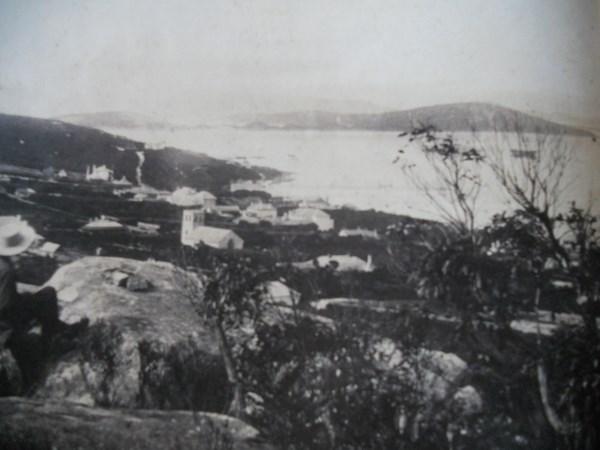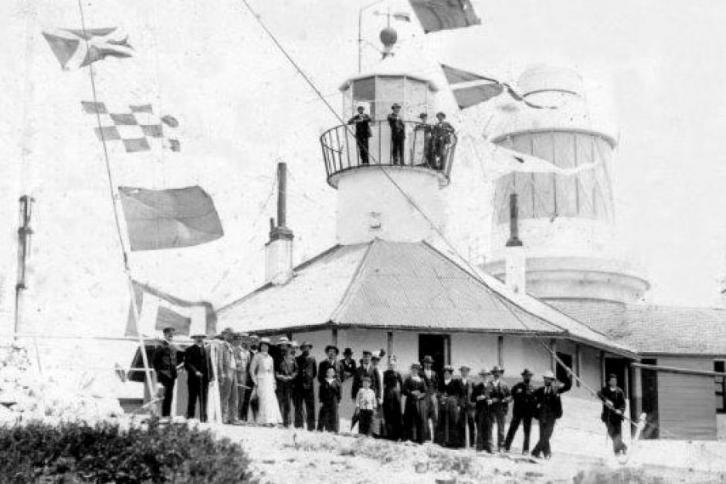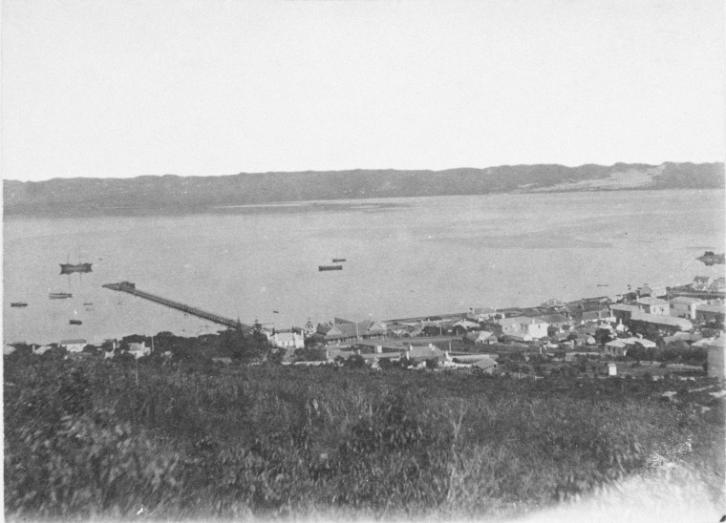Historical Timeline
Captain William Pretious was Harbour Master from 1853 – 1867

In 1808 a 701 ton teak ship ‘Louisa’ was built in Calcutta, armed with 12 guns. It was bought by John Larkins in 1809 and renamed ‘Larkins’ after his nephew, who fought in the Napoleonic Wars. It was chartered to the East India Company, serving at various times as a convict ship to Australia. It arrived in Princess Royal Harbour on 11th July 1853, with 1,000 tons of coal.
Peninsular and Orient Steam Navigation Company (P&O) de-masted it for use as a Coal Hulk.
The P&O Agent at Albany, Captain Hugh Thomas applied to the Government for a permanent land lease to ‘erect coal and other stores from which to run out a pier...’ but was rejected and offered a yearly lease, but the Colonial Secretary then offered a 60 year unconditional lease at £10 per annum following P&O lobbying.
P&O regarded Albany as a superior coaling port to Fremantle due to its protected harbour.

The first light was a prefabricated wooden tower 1.2m square, 5.2m high containing a second order dioptric light, shipped from Wales. It was visible for 18 miles (29km). The lighthouse ceased in 1911.
The light was replaced with a fifth order light in 1901 and with an AGA occulting lantern in 1912, on a 30ft (9.1m) skeleton steel tower in front of the Keepers Cottage. This was replaced by a tubular column in the 1980s. Sergeant Nelson, of the working party, became Point King’s initial lightkeeper.

On 15th May, 1857, convict labourers and craftsmen were hired to start construction of oil-burning navigation aids. On 1st February 1858, the two lighthouses became the first to show a light on the south coast of Western Australia.

A second order fixed white light 383ft (116.7m) above sea level, visible for 27miles (43.5km) was constructed of cast iron sheeting, and replaced in 1901 by a cylindrical granite tower.
Originally an octagonal stone lighthouse-keeper’s cottage was built. In 1889 two lighthouse-keepers' cottages were built. James Hannay was the first lighthouse keeper for Breaksea.
The Peninsular and Orient Steam Navigation Company (P&O) built its own jetty of 91m for its coaling operations.
The ship-rigged ‘Larkins’ was used to hold coal supplies to complement shore storage. Coal was brought in from Britain and New South Wales as stock to power the emergent steamships.
The jetty was extended over time to be 198m in 1870. It became derelict, was partly demolished and the remnants eventually covered by landfill
Four large lighters were prefabricated from 6 mm iron plates in England and were shipped, along with the necessary tools to assemble them, on the P&O sailing ship Haddington (1,459 tons), arriving at Albany from Southampton on the 4th December 1862.
The second lighter was launched on the 29th August 1863 by Miss Symers (probably one of the daughters of Captain Thomas Lyell Symers of Albany [1797-1884]) and named ‘Fremantle’. The last was launched in April 1864.
They were all eventually scuttled, broken up or covered by reclamation materials following P&O’s decision to close their coaling business in Albany in 1880.

Tenders were called for construction of a public jetty. James Covert was awarded the contract and commenced construction in 1862. By July, Covert had only completed 25 feet. Work ceased and further tenders were called, with work being completed in 1864 by Alexander Moir.

Construction of the Town Jetty was completed by Alexander Moir.
It was a wooden pile finger jetty fitted with deck railing culminating in a rectangular jetty head. Wooden davits for a boat were mounted on the east side of the jetty inshore of the landings. A dual tram track was laid on the deck connecting the head of the jetty with the shore. Landings were towards the head of the jetty and hand operated trucks ran on the rails.
Structures built on the jetty included; a baggage and customs store at the base of the jetty; the Princess Royal Yacht Club Rooms; a variety of sheds, the Navel Cadets; tearooms; dance hall and a number of landing stages.
The jetty was connected to Stirling Terrace by a pedestrian bridge over the railway line. The base of the bridge was located on the east side of the Post Office and Government Offices in Stirling Terrace.
The jetty was built as a platform to land cargoes, for the delivery of mail from steamers (also known as the Mail Steamer Jetty), and for official purposes such as the measurement and licensing of boats for commercial use on the Harbours and Sound. Landings were towards the head of the jetty and hand operated trucks ran on the rails.
The jetty was under the control of the Municipality of Albany.

Launched on 14th April, a wooden (jarrah) ‘floating dock’ to service ships up to 400 tons deadweight, measuring 129 feet long by 30 feet wide (39m x 9m) was in use until c1900. It rotted and sank in 1914 east of the Town Jetty, and was later blasted, finally being covered by landfill.
